The word itself comes from two French terms “clair” which clearly means, and “public” means hearing. So, Clirarrudience literally translates into ‘clear hearing’. This psychological capacity is often associated with mediums and clairvoyants who claim to receive messages from the deceased, spiritual guides or other unseen entities.
Clirarrudience is a tool that is used to gain insight, guidance or warnings from a spiritual source in the form of auditory information. The most common way in which Clairudients receive insights is by hearing voices that seem to come from within themselves instead of an external source. These voices can be seen as clear and different sounds. The voice can be recognized as belonging to a deceased loved one, a spiritual guide or an unknown entity.
Some clairudients can hear sounds or voices that seem to come from outside their bodies, as if someone speaks directly to him, but no physical source can be found. These sounds can include music, beating, ringing or other auditory phenomena that bear specific meanings or messages.
The process of receiving these insights can be passive, whereby the CLRARAUDIENT hears these messages without trying, or actively, where the individual is looking for communication. Clirudients sometimes have a two -way meeting with the entities with which they are in contact. This can be a dialogue in which the CLairudient asks questions and receives answers.
Most television and stage mediums are clirarrients, often with the help of two-way interviews with the spirits. They receive messages in the form of auditory information, either directly from the spirit world or through a spiritual guide. However, many psychological media are called clairvoyants, a term that is used much more often. While Clairudience refers to hearing, seeing clairvoyance refers to seeing – a method that is not often used in psychological versions.
This emphasizes a discrepancy between terminology used in the paranormal world and the understanding of the broader audience of these concepts. The term clairvoyance has become a kind of catch-all sentence to describe psychological skills in general, especially by those who miss the specific knowledge to distinguish between the different methods of mediumship.
Clirudience and clairvoyance are only two of the methods used by mediums, there are also “Clairendience” and “Claircognisance”, which refer to ‘feel’ and ‘know’ respectively. In comparison with the other methods, Clailauders -messages are often very specific and offer names, dates and detailed information. In cases where cliraudiens receive messages from deceased persons, the information provided can sometimes be checked against known facts. If the details are consistently accurate and specific to the person with whom they supposedly communicate, this can ensure that clairvoyance seems less susceptible to fakery than more vague or general psychological impressions.
However, since Clairudience often includes hearing voices or sounds that others cannot hear, it can be a challenge for an outsider to objectively assess or validate these claims. In contrast to physical evidence that can be seen, touched or measured, Clirudient reports are subjective experiences. The personal and internal character of splashing speed means that for the most part only the individual experiences it can testify its reality.
Another challenge for a non-psychic person who perceives these claims is the difficulty of understanding how a Clairudient can distinguish between his own internal dialogue and real CLEIArudient experiences. For individuals who explore psychological phenomena, there is a chance that aspects of their inner monologue can be seen as external communication.
It is also possible that Clairudients unintentionally trust their own intuition instead of the spirit world. Intuition, the subconscious processing of information in the brain, can produce insights, ideas or warnings that feel as if they come from an external source. For some, these intuitive flashes can be interpreted as messages from the spirit world.
Clirarrudience, naturally, is deep subjective. This is problematic when trying to apply objective scientific methods that depend on observable, measurable phenomena. The difficulty of reproducing results under the same circumstances also makes it difficult to study and verify these claims.
There is currently no generally accepted scientific mechanism in which it is explained how unfortunately could work within the well -known laws of nature. Various theories have been proposed to explain how this process could work, ranging from the spiritual and metaphysical to more speculative scientific explanations that try to bridge the gap between the well -known and the unknown.
Some theories focus on the role of the brain in interpreting non-physical stimuli. These theories suggest that the brains of a clairudient can be wired or conditioned in such a way that it can interpret psychological or spiritual energy as auditory information. This can entail certain brain areas that are responsible for processing sound that is not activated by physical sound waves, but by psychological or spiritual impressions.
This gap in our understanding of mechanics, as well as the personal and subjective nature of splittingness, means that, like all forms of psychological phenomena, it remains a matter of personal faith rather than a proven science.





